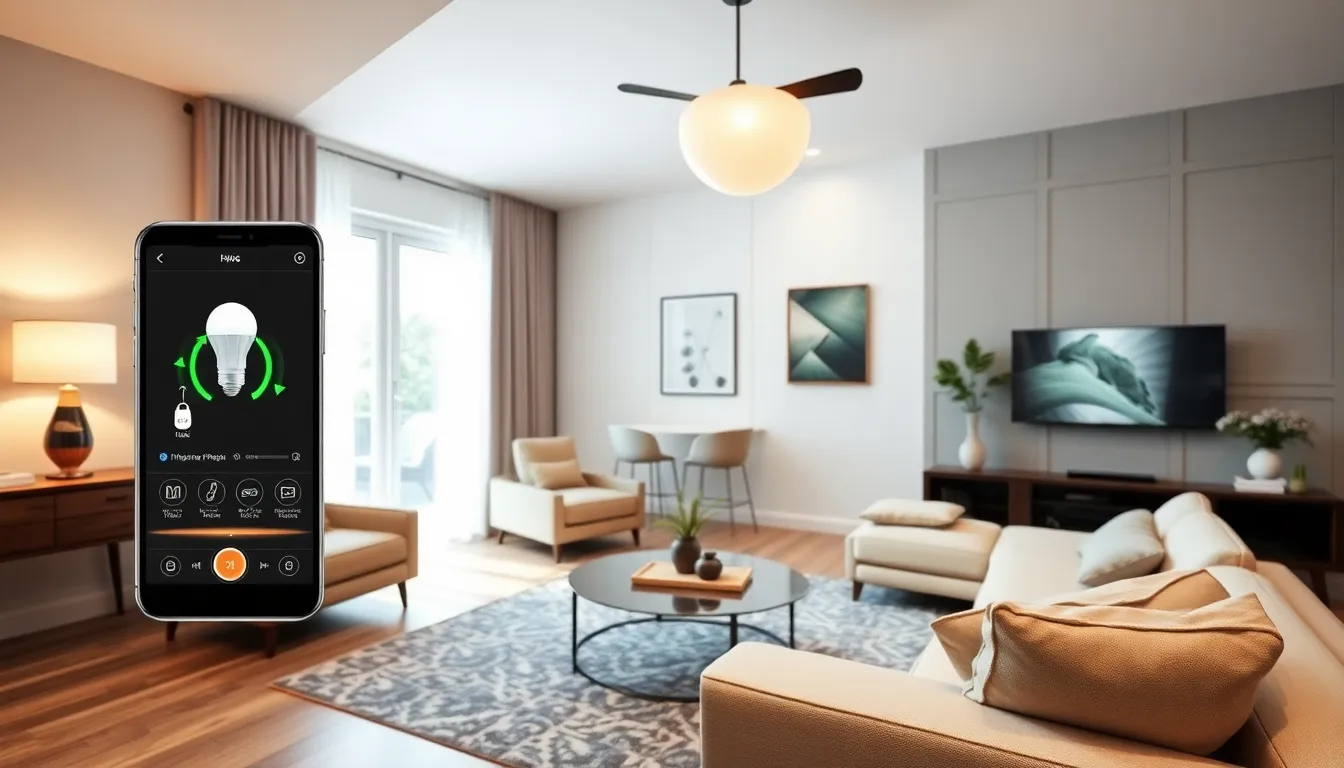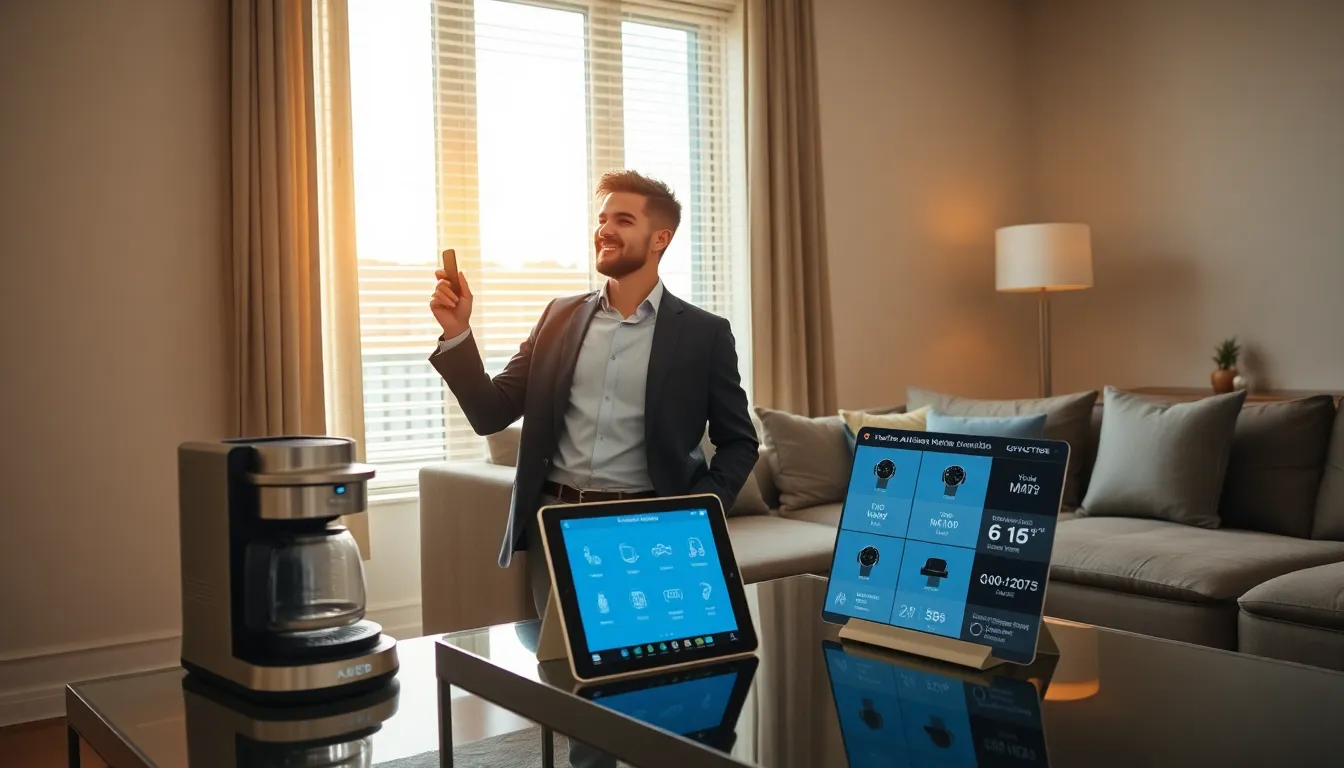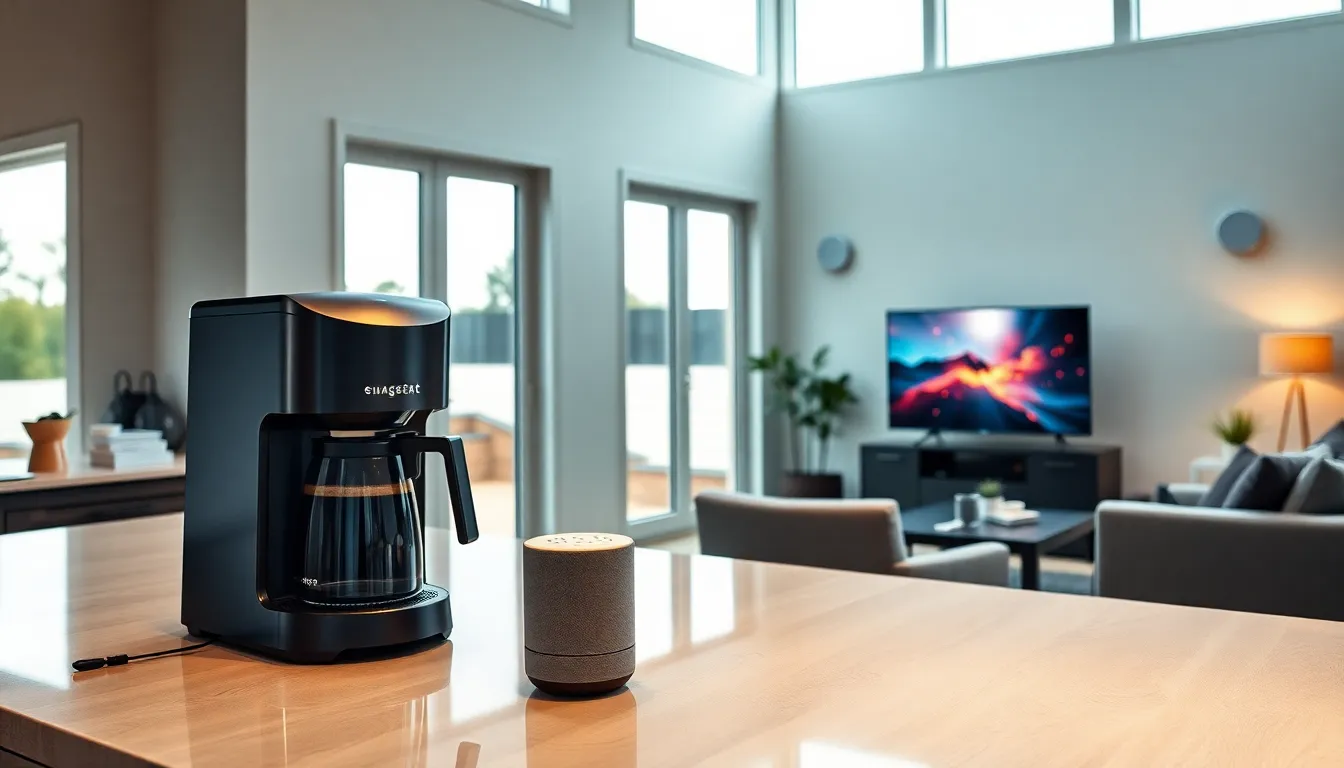Imagine a world where you can control your home with just a tap on your phone—no more wrestling with remote controls or yelling at your thermostat. Welcome to the age of Bluetooth smart homes, where convenience meets innovation and a sprinkle of magic. With Bluetooth technology, everyday tasks become effortless, allowing you to dim the lights, adjust the temperature, or even brew your morning coffee without lifting a finger.
Table of Contents
ToggleOverview of Bluetooth Smart Home
Bluetooth smart homes revolutionize daily living by increasing automation and control. This technology connects devices wirelessly, allowing seamless interaction between smartphones and home appliances. Users can adjust lighting, regulate temperature, and manage coffee brewing from their mobile devices, simplifying routines.
Devices utilizing Bluetooth technology provide convenience and accessibility. Smart bulbs enable users to change brightness and color through an app, enhancing the ambiance of any room. Smart thermostats learn usage patterns and adjust heating or cooling accordingly, promoting energy efficiency.
Bluetooth also enhances security measures. Homeowners can monitor security cameras and receive alerts about any unusual activity directly on their phones. Smart locks allow keyless entry, making it easier to manage home access for family or guests.
Integration of Bluetooth in smart homes results in streamlined systems. Voice assistants like Amazon Alexa or Google Assistant support Bluetooth connections, facilitating hands-free control of devices. Routine tasks transform into automated processes, saving time and effort.
Compatibility remains a significant factor. Most modern smart devices incorporate Bluetooth technology, ensuring users can connect a variety of systems without compatibility issues. This wide-ranging interconnectivity extends usability across all smart home applications, making technology more user-friendly.
Bluetooth smart home solutions exemplify modern living’s shift towards increased functionality and ease. With ongoing advancements, users can expect even more sophisticated integrations that elevate everyday experiences. Sound development continues in this sector, promising exciting future innovations for home automation.
Benefits of Bluetooth Smart Home

Bluetooth smart homes offer innovations that elevate convenience and control for users. The technology provides users with advanced solutions for managing various home functions seamlessly.
Enhanced Connectivity
Devices within a Bluetooth smart home connect easily, allowing a user to control multiple devices from a single smartphone. Smart bulbs adjust settings effortlessly, while thermostats synchronize with smartphones for optimal temperature control. Voice assistants like Amazon Alexa integrate seamlessly with Bluetooth devices, enabling voice commands for instant adjustments. Many modern devices support Bluetooth connections, ensuring users enjoy widespread compatibility. This connectivity simplifies interactions and increases the overall efficiency of tasks around the home.
Improved Energy Efficiency
Smart thermostats learn user habits, optimizing energy use based on real-time data. Simple adjustments to lighting and temperature through Bluetooth technology lead to reduced energy consumption, lowering utility bills. Users program schedules for devices like plugs and lights, ensuring they operate only when needed. With historic data tracking, smart homes unveil insights that encourage efficient energy use. This enhanced energy management contributes not only to cost savings but also to a reduced carbon footprint for homeowners.
Popular Bluetooth Smart Home Devices
Bluetooth smart home devices provide enhanced convenience and seamless automation. These products significantly improve user experience through interactive capabilities and wireless connectivity.
Smart Speakers
Smart speakers serve as central hubs for voice control. They enable users to play music, control devices, and even check the weather with simple voice commands. Examples include Amazon Echo and Google Nest, which integrate effortlessly with various smart home devices. These speakers facilitate hands-free operation, making daily tasks more efficient. They connect through Bluetooth and Wi-Fi, allowing users to stream audio from their smartphones or other devices.
Smart Lighting
Smart lighting solutions offer customizable illumination options. Brands like Philips Hue and LIFX allow users to adjust brightness and color through smartphone apps. These smart bulbs operate on Bluetooth, ensuring direct communication with devices without needing a hub. Programmable schedules, scene settings, and remote control capabilities enhance energy efficiency and user satisfaction. Smart lighting solutions contribute to home aesthetics while reducing energy consumption through automation.
Security Systems
Bluetooth-enabled security systems enhance home safety. Products like August Smart Lock and Ring Doorbell allow remote access and monitoring through a mobile app. Users receive real-time alerts about suspicious activities and can control locks or cameras from anywhere. Security systems integrate with existing smart home devices, providing comprehensive protection. Automation features let homeowners customize alerts and access permissions, significantly improving convenience and security.
Setting Up a Bluetooth Smart Home
Setting up a Bluetooth smart home involves careful consideration of devices and installation. Users gain enhanced convenience and automation by selecting compatible tools.
Choosing the Right Devices
Choosing the right devices involves assessing needs and compatibility. Smart speakers, like Amazon Echo or Google Nest, act as control hubs for various devices. Smart lighting options, such as Philips Hue or LIFX, offer customizable brightness and colors. Thermostats like Nest adjust temperature based on behavior patterns. Security systems, including August Smart Lock and Ring Doorbell, enhance safety through remote monitoring. Always consider device compatibility with existing technology for seamless integration.
Installation Process
Installation process begins with preparing a central hub. Users must plug in smart speakers and connect them to Wi-Fi. Next, downloading respective apps for each device simplifies setup. Following the app guidelines provides step-by-step instructions for adding devices. Many smart devices connect through Bluetooth, creating direct communications. Configure device settings within the app to optimize functionality. Testing connections ensures everything operates correctly within the home network.
Future Trends in Bluetooth Smart Home Technology
Growing interest in energy efficiency drives advancements in Bluetooth smart home technology. Smart appliances that optimize energy consumption emerge as leaders in this domain. Innovations include refrigerators that monitor the freshness of food and adjust cooling accordingly, enhancing sustainability.
User demand for enhanced security continues to shape future developments. Technologies for facial recognition in security cameras help identify visitors, offering greater peace of mind. There’s also an increased focus on Bluetooth security protocols, ensuring data protection in smart home environments.
Customization options are on the rise, allowing users to tailor their experiences. Devices are increasingly incorporating machine learning, enabling them to adapt to individual preferences over time. For instance, smart thermostats adjust temperature settings based on occupancy patterns, providing comfort while saving energy.
Integration with emerging technologies like artificial intelligence promises even greater efficiency. Voice-activated assistants are evolving to offer proactive suggestions based on user habits, making control more intuitive. Integration with smart wearable devices adds another layer, with users receiving notifications directly on their smartwatches.
Furthermore, interoperability among devices will enhance user experiences. Standards like Matter are being implemented to ensure devices from different manufacturers work seamlessly together. As this trend progresses, smart homes can expand without the headache of compatibility issues.
Investment in user-friendly interfaces remains crucial. App designs are evolving, focusing on simplifying the management of multiple devices. Real-time monitoring features will grow more comprehensive, providing actionable insights into energy usage and security.
Lastly, the rise of DIY smart home kits meets the demands of tech-savvy consumers. Users can create custom setups tailored to their lifestyles without requiring professional installation. As technology progresses, the wave of Bluetooth smart home innovations will continue to redefine convenience and automation.
Bluetooth smart home technology is transforming how people interact with their living spaces. By offering seamless control over devices through smartphones and voice assistants, it enhances convenience and efficiency in daily tasks. The integration of smart lighting, thermostats, and security systems not only simplifies home management but also promotes energy savings and improved safety.
As advancements continue to emerge, users can expect even greater functionality and customization options. The shift toward Bluetooth-enabled solutions exemplifies a future where homes are not just smart but also intuitively responsive to individual needs. Embracing this technology paves the way for a more connected, efficient, and secure living environment.






